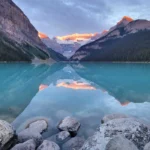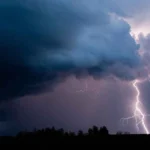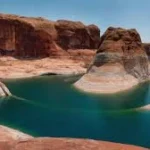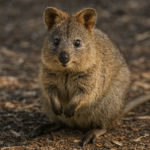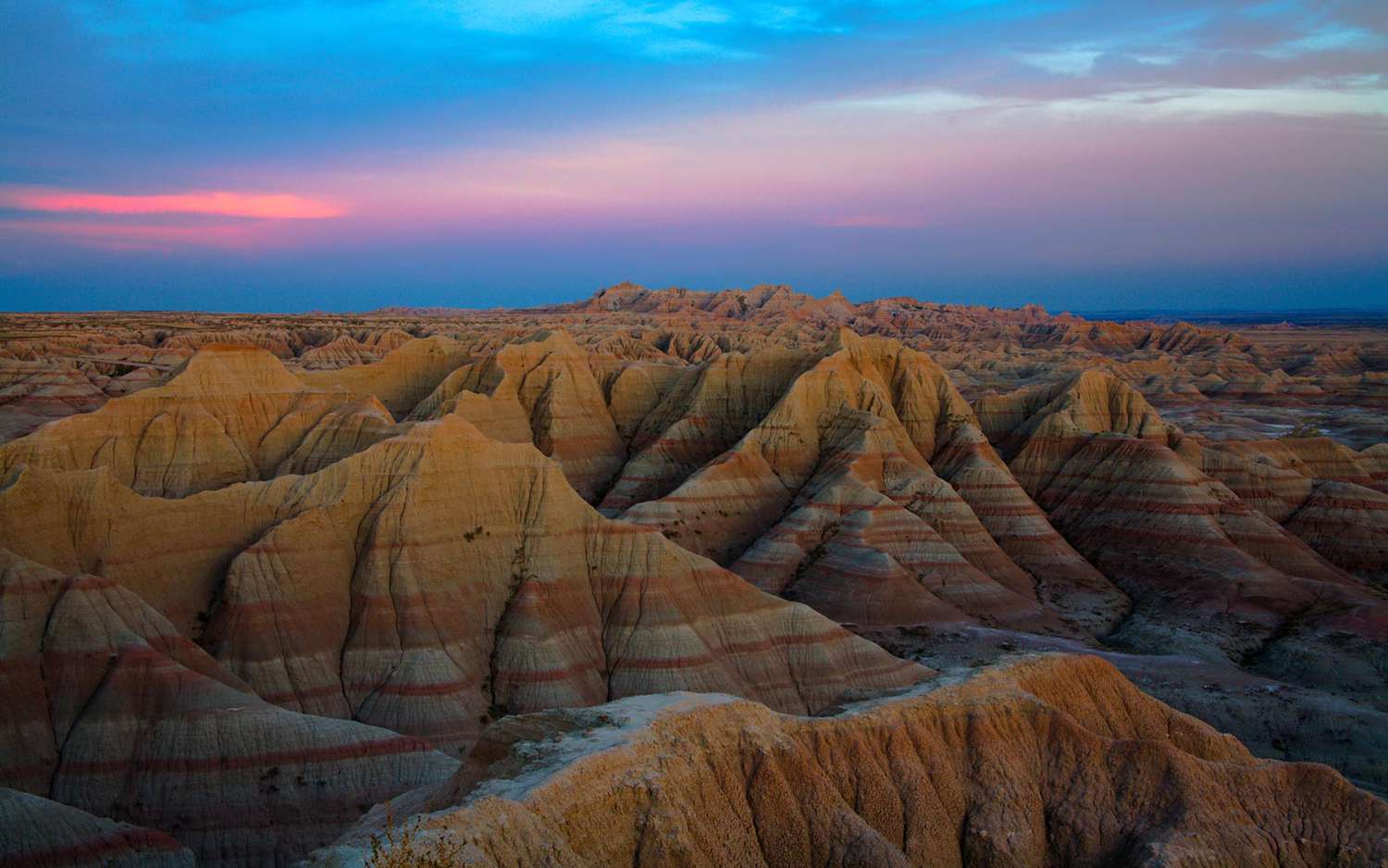
Nestled in the southwestern corner of South Dakota, Badlands National Park spans about 244,000 acres of wild and rugged land. Imagine a canvas of nature’s artistry where you’ll encounter a breathtaking display of eroded wonders – think towering spires, ancient canyons, and open prairies. The rocks here tell stories of times long past, with their layers revealing chapters from different epochs of our planet’s history. The Lakota Sioux named it “Mako Sica,” honoring its tough terrain. Amidst the challenging environment, a rich tapestry of life thrives, including hardy plants and remarkable animals like bison, bighorn sheep, and black-footed ferrets. As you explore the trails, you’ll uncover ancient fossils and get a glimpse into the past. And it’s not just the wildlife that’s captivated by this place – photographers, filmmakers, and anyone with an appreciation for nature’s grandeur find themselves drawn to Badlands National Park’s cinematic beauty, making it a true haven for nature enthusiasts and adventurers alike.
Here are some interesting facts about Badlands National Park:
Badlands National Park’s journey began on March 4, 1929, when it was established as a national monument by President Herbert Hoover. It was initially designated to protect the unique geological formations and landscapes found in the area.
The Badlands region holds significant cultural importance for the Lakota Sioux people. They called it “Mako Sica,” meaning “land bad,” due to its rugged and challenging terrain. The land was both revered and challenging for them, as it provided sustenance but also posed difficulties.
Located in southwestern South Dakota, Badlands National Park encompasses approximately 244,000 acres. It’s situated within the Great Plains region, characterized by rolling grasslands and striking rock formations.
Before becoming a national park, the Badlands area was utilized by Native American tribes, including the Lakota Sioux, for hunting. Later, European settlers ventured into the region for homesteading and cattle ranching.
The Badlands are a treasure trove of fossils from the Oligocene epoch. The area was once a lush landscape with swamps and forests. Fossil discoveries have included the remains of ancient horses, three-toed horses, rhinoceroses, camels, and other prehistoric creatures.
The park’s iconic rock formations were created through millions of years of sediment deposition, followed by the relentless forces of erosion. Erosion exposed the multicolored layers of sedimentary rock, forming the unique landscape we see today.
In 1939, President Franklin D. Roosevelt issued an executive order transferring jurisdiction of the park to the U.S. Bureau of Reclamation. The intent was to construct a dam on the Cheyenne River for irrigation purposes. However, the dam project was never completed due to engineering challenges and budget constraints.
The Great Depression led to the establishment of the CCC, which played a pivotal role in developing the park’s infrastructure. CCC workers built trails, roads, and other facilities, leaving a lasting impact on the park’s accessibility and visitor experience.
During World War II, parts of the park were repurposed for military training. The U.S. Army used the area as a practice bombing range to prepare pilots for combat. Craters from the bombing runs can still be seen today.
The stark beauty of Badlands National Park has attracted filmmakers and photographers over the years. Notably, the park served as a filming location for parts of the Academy Award-winning movie “Dances with Wolves,” directed by and starring Kevin Costner. The park’s dramatic landscapes added to the authenticity of the film’s depiction of the American frontier.
The Badlands Wilderness Area is a designated wilderness zone within the park, spanning approximately 64,144 acres. This protected area preserves the rugged and untamed nature of the Badlands landscape, providing a sanctuary for wildlife and offering visitors a chance to experience the park’s pristine beauty.
Encompassing over 64,000 acres, Badlands National Park is home to one of the largest protected mixed-grass prairies in the United States. This expansive prairie ecosystem supports a diverse range of plant and animal species, contributing to the park’s ecological diversity.
The park’s elevation varies significantly across its expanse, ranging from around 2,500 feet to 3,340 feet above sea level. This variation in elevation contributes to the creation of the distinct geological formations and landscapes that define the Badlands.
Badlands National Park covers approximately 244,000 acres of rugged terrain. This vast expanse of land showcases a wide range of geological formations, from towering spires to deep canyons, offering visitors a captivating visual experience.
The oldest exposed rock layers in Badlands National Park are estimated to be around 75 million years old. These layers hold clues to the ancient history of the region, providing insights into the geological processes that shaped the landscape over millions of years.
The allure of the Badlands draws over one million visitors to the park each year. Tourists from around the world come to witness the striking beauty of the rock formations, explore the trails, and immerse themselves in the park’s unique natural environment.
Spanning over 244,000 acres, Badlands National Park showcases a diverse range of ecosystems, from expansive prairies to intricate rock formations. This vast area provides ample opportunities for exploration and discovery.
Within the park’s boundaries, there are more than 64,000 acres designated as wilderness area. These areas are preserved in their natural state, allowing visitors to experience the untouched beauty and solitude of the Badlands landscape.
The Wall Drug Store, located near the entrance of Badlands National Park, is a famous tourist attraction. Known for its quirky advertisements and wide array of offerings, Wall Drug draws visitors with its unique charm. The town of Wall, where the store is situated, serves as a gateway to the park.
Badlands National Park is renowned for its stunning geological formations, including layered buttes and pinnacles. These formations have been sculpted by the forces of erosion over millions of years, resulting in the visually captivating landscapes seen throughout the park.
The park is situated in a semi-arid climate, receiving an average of 16 inches of precipitation per year. This limited rainfall contributes to the unique ecosystem of the Badlands, with its hardy grasses and adapted wildlife.
Visitors to Badlands National Park can explore over 100 miles of hiking trails. These trails lead adventurers through diverse landscapes, from open prairies to narrow canyons, providing opportunities for exploration and discovery.
The park is home to a diverse array of wildlife, including iconic species like bison, bighorn sheep, pronghorn, coyotes, and the critically endangered black-footed ferret. The varied habitats within the park support a rich and vibrant ecosystem.
The White River Badlands within the park hold one of the world’s largest and most complete fossil assemblages from the Oligocene epoch. These fossils provide a window into the prehistoric world, offering insights into the ancient creatures that once roamed the area.
The park’s largest designated wilderness area is Sage Creek Wilderness, covering about 64,000 acres. This expansive wilderness zone allows visitors to experience the raw and untouched beauty of the Badlands landscape.
Frequently Asked Questions about Badlands National Park
- What are the Badlands?
- The Badlands are a dramatic landscape of sharply eroded buttes, pinnacles, and spires mixed with vast grasslands. They contain some of the world’s richest fossil beds, showcasing the evolution of mammals like horses, rhinoceroses, and saber-toothed cats.
- Where is Badlands National Park located?
- Badlands National Park is located in southwestern South Dakota, in the northern Great Plains.
- How big is Badlands National Park?
- The park encompasses approximately 244,000 acres (381 square miles).
- When was Badlands National Park established?
- It was originally established as Badlands National Monument in 1939 and was redesignated as a national park in 1978.
- What does “Badlands” mean?
- The name comes from the Lakota people, who called the area “mako sica,” meaning “bad lands.” Early French trappers also referred to it as “les mauvaises terres à traverser,” meaning “difficult lands to cross.” This reflects the rugged terrain, which made travel challenging.
Visiting the Park:
- What is the best time to visit Badlands National Park?
- The best times to visit are generally in the spring (May-June) and fall (September-October), when temperatures are milder. Summer can be very hot, and winters can be cold with snow.
- How much does it cost to enter Badlands National Park?
- Entry fees vary, but typically there is a fee per vehicle. It is always wise to check the official National Park service website for the most up to date fee’s.
- Are there hiking trails in Badlands National Park?
- Yes, there are several hiking trails, ranging from short, easy walks to longer, more strenuous hikes. The Fossil Exhibit Trail and the Notch Trail are popular choices.
- Can I camp in Badlands National Park?
- Yes, there are designated campgrounds within the park, and backcountry camping is also permitted with certain regulations.
- Are pets allowed in Badlands National Park?
- Pets are allowed in certain areas of the park, but they must be kept on a leash. They are generally not allowed on hiking trails or in public buildings. Always check the official NPS website for the most current pet regulations.
- How far is Badlands National Park from Mount Rushmore?
- Badlands National Park is approximately 1 to 2 hours east of the Black Hills, where Mount Rushmore is located.
Geology and Fossils:
- What are the colored layers in the Badlands formations?
- The different colored layers represent various geological periods and are primarily composed of sedimentary rock. The yellow and red layers are often fossilized soils (paleosols).
- Are dinosaur fossils found in Badlands National Park?
- While the Badlands are famous for fossils, they primarily contain fossils of mammals from the Oligocene Epoch (about 34 to 23 million years ago), not dinosaurs. However, the rock layers do contain marine fossils from the late Cretaceous period.
- Can I collect fossils in Badlands National Park?
- No, it is illegal to collect any fossils, rocks, or other natural or cultural objects from the park.
Wildlife:
- What kind of wildlife can I see in Badlands National Park?
- The park is home to a variety of wildlife, including bison, pronghorn, bighorn sheep, prairie dogs, and various bird species.
- Are there any safety concerns regarding wildlife?
- Yes, it’s important to keep a safe distance from all wildlife and never feed them. Bison, in particular, can be dangerous, so maintain a respectful distance.
